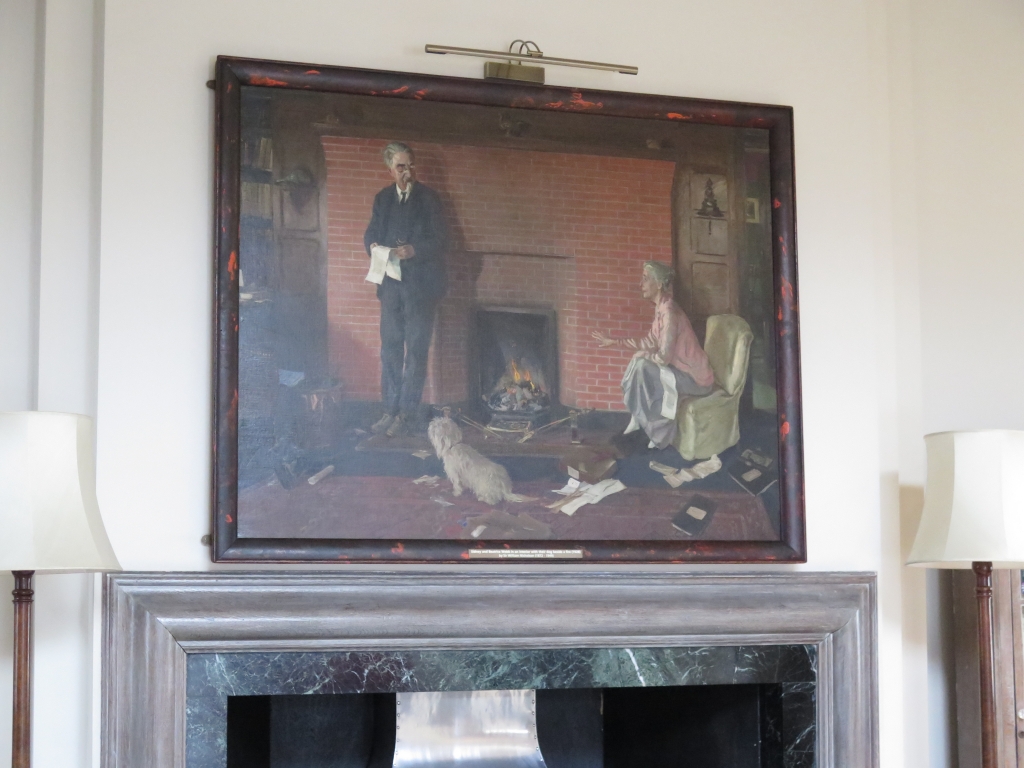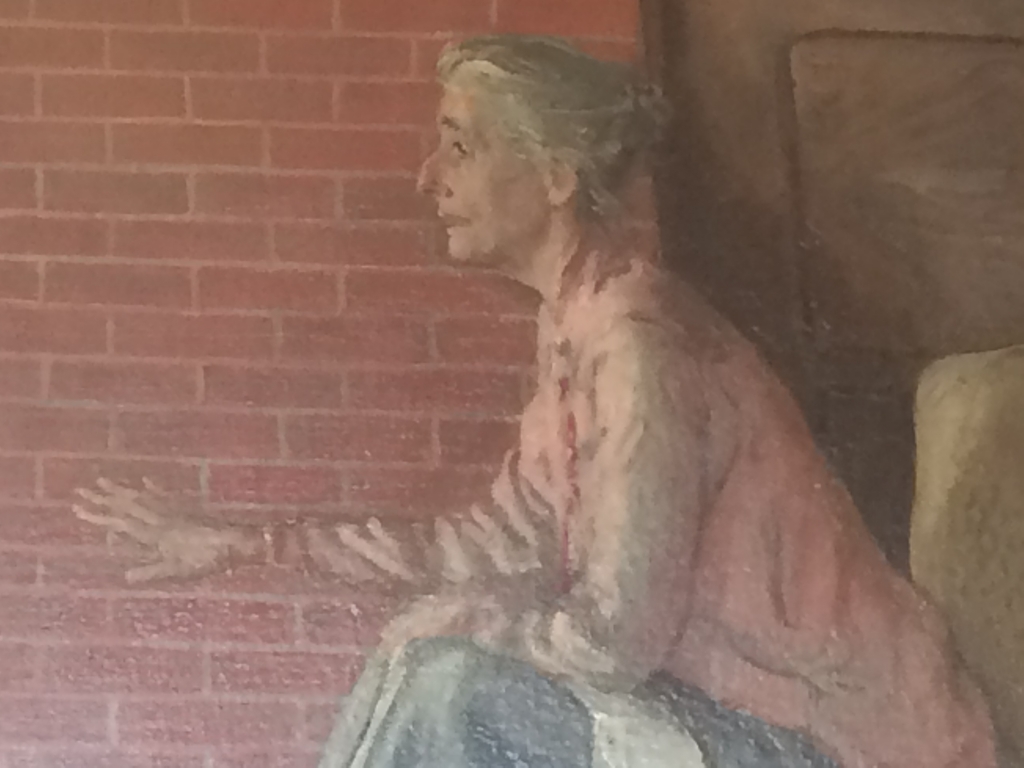Featuring two of LSE’s founders, the Webb portrait hangs above the fireplace in the Shaw Library. LSE Archivist Sue Donnelly tells the story of Sidney and Beatrice Webb at Passfield Corner by William Nicholson.

In the present year Mr and Mrs Sidney Webb keep a joint seventieth birthday and it is proposed to celebrate this event by securing the painting of a joint portrait of them…. It is proposed that the portrait shall be placed in the new Founders’ Room at the School of Economics, which, among the many creations of the Webbs holds perhaps a peculiar place in their affections.
This request for subscriptions, signed by the Liberal politician Herbert Samuel, attracted a wide range of subscriptions from the £2 2/- of Winston Churchill to the £21 donated by the Webbs’ old friend and LSE co-founder G Bernard Shaw. Beatrice Webb’s diary hinted at even greater support:
I rather suspect Beveridge has secured the guarantee of GBS and that the signed appeal which is to come will not carry the matter very far. However GBS can afford it, even if he be ‘let in’ for a few hundred pounds!
Work began in March 1928 when Beatrice noted in her diary:
And to interrupt our few mornings’ work together there comes a fashionable portrait painter to construct a picture of the Webbs…
The fashionable portrait painter was William Nicholson (1872-1949) whose previous commissions included A C Benson, Master of Magdalen College, Oxford, and J M Barrie, the author of Peter Pan.
Nicholson painted the Webbs at their country house, Passfield Corner, in Liphook, Hampshire and between March and June 1928 Nicholson stayed for several weekends making initial sketches and appearing in May with a large canvas.

Beatrice liked Nicholson: “An attractive person, sincere, intelligent and artistically wide awake – with whom we were quickly friends”. She was however less enamoured of the process or necessity of a portrait. She wrote on 28 September 1928:
Portraits are usually disappointing: pictures of persons should be regarded as symbols not representations. But why all this fuss about persons? What does it matter what the appearance of this person or that amongst the countless multitudes passing continuously from birth to death in all parts of the world, decade after decade. A composite type shown of successive generations of the different races would be interesting – but the artist would have to be a scientist as well as an artist.
Beatrice’s portrait proved challenging. On 15 June 1928 she wrote:
I have been painted in and painted out half a dozen times – now at last the figure satisfied him and is quite good enough for me – rather too young and good looking – but that fault is inevitable in a woman’s portrait.

Sidney was rather more reticent about the process but the finished portrait depicted Sidney and Beatrice Webb in the drawing room of Passfield Corner. Beatrice perches on the edge of her chair while Sidney leans beside the fireplace. They are surrounded by the galley proofs of the latest volume of their history of local government, published in 1929. Volumes of Beatrice’s diary are beside her chair and on the rug before the fire sits their small white terrier – whose name is now forgotten.
Despite all the reservations as early as April 1928 Beatrice Webb was writing to LSE’s Director, William Beveridge about the unveiling:
Sidney and I think it would be most undesirable to connect the portrait with the opening of the new buildings by the Prince of Wales. Why not have a private view of the portrait in some other room at the School one afternoon a week before the great event?

In the end the portrait was not ready for the opening of the Founders’ Room (now commonly known as the Shaw Library) and a small reception was held in January 1929. On 16 January 1929 Beatrice wrote:
In the beautiful Founders’ Room of the L S of E, there was a reception to see the Webb portrait hung over the mantelpiece – a really lovely picture – as a picture – whatever criticism my friends may make about my portrait.
For Beatrice this was a moment of acknowledgment:
Altogether our stock is up – or rather we have through old age, ceased to have detractors – no one troubles about aged folk except those who like and respect them. Which adds to the pleasantness of life, though possibly also to its illusions.
The painting appears to have been a great success and the School Secretary, Janet (known as Jessy) Mair, wrote to William Nicholson after the reception in glowing terms (LSE/CFR/130/1/C):
The party yesterday was really a great success from your point of view. Everybody was delighted with the picture. I didn’t hear a single dissentient word. Various people, showing a great deal it seemed to me of insight, said it was a modern version of a Vermeer, de Hoogh or Rembrandt, and indeed I think it is.
The double portrait now hangs over the fireplace in the Shaw Library – a reminder to staff and students of the School’s founders.






Email from Jim Thomas, Emeritus Reader in Economics, LSE:
Dear Sue,
I’ve just read your article on the Webb Portrait and enjoyed it very much. I was reminded by it of a sketch put on by the Students’ Union back in the 1960s. The curtains opened to a replica of the portrait, complete with toy dog. The Webbs had a song to the tune of ‘Two Sleepy People’ and while I can’t now remember the words of the song I do remember the chorus, when went:
Two intellectuals
With so much to write
But please tell us
What to do at night.